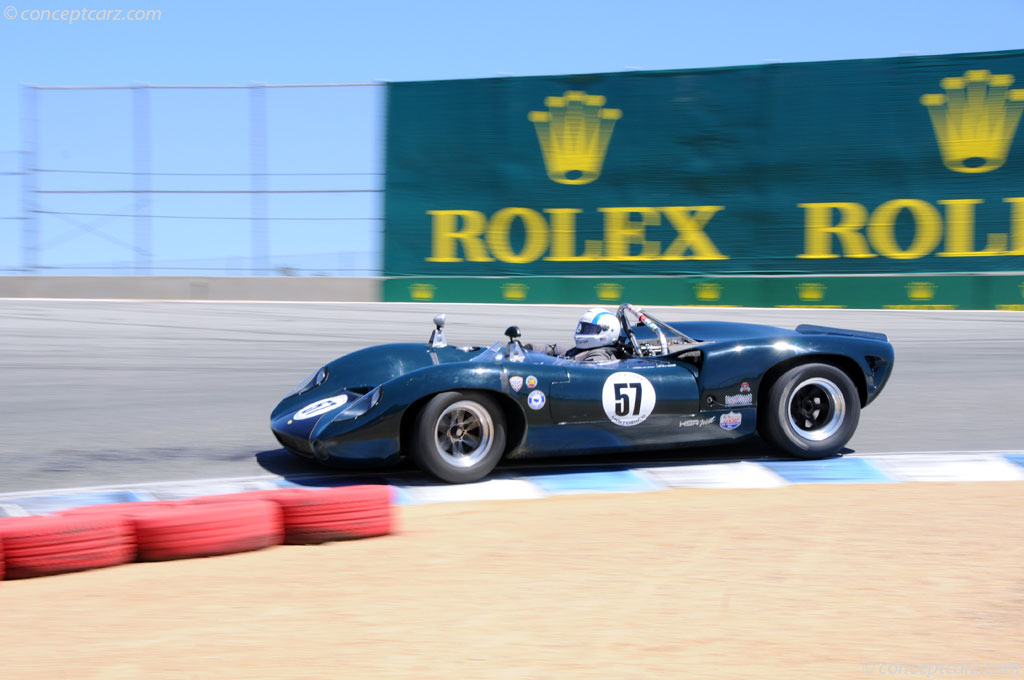1966 Lola T70 MKII Navigation
The Lola T70 Spyder sports racer holds the distinction of being the winner of the first-ever Can-Am Championship. Developed by Lola Cars Ltd, of Bromley, Kent, in 1965, more than one hundred examples would be built in three versions before being replaced in the Can-Am series by the lighter Lola T160. 
Spyder
Chassis #: SL71/36
View info and history
Auction entries : 1Walter Hansgen won the Monterey Grand Prix at Laguna Seca Raceway on October 17th, 1965, with a Ford-powered T70. The following year, Chevrolet-powered T70s won five of the six races, and John Surtees was named the champion.Lola's path to greatness began with humble beginnings, with its prototype Mark 1 sports car being built in a garage behind Broadley's family's tailoring shop in Bromley in 1958. The architects of the racecars that would become world motorsport-winning champions were Eric Broadley and his cousins Graham and Rob Rushbrook. The MK2, a front-engined, single-seater Formula Junior, followed the first customer-production sports cars.One of Broaley's early projects and his first monocoque design was the MK6 GT Coupe, intended to house American V8 engines. The MK6 GT became part of Ford's Le Mans racing program in 1963 and would become the all-conquering Ford GT40. Broadley left the program in 1964 and returned to sports cars with a new design for Group 7 racing - the T70. Creativity was encouraged for the Group 9 category, as the rules were nearly non-existent, except that the sports prototypes needed enclosed wheels and provision for an onboard spare. The winners of the race would be decided by the entrant having the most durable, fastest, lightest, and most aerodynamic vehicle. An integral component was the driver and their ability to control the car and make it to the finish. 
Spyder
Chassis #: SL71/21
View info and historyThe Lola T70 was given a full-length monocoque body tub fabricated of aluminum panels on a steel framework. Its compact wheelbase measured 95 inches and had a front and rear track size of 54 inches. It was suspended with a conventional independent suspension setup that had double wishbones at the front and lower wishbones and top links with trailing arms at the rear. Since the rear of the car would be responsible for handling the bulk of the engine's torque, the rear suspension was engineered to absorb these forces. The inboard disc brakes were an unusual feature that Lola engineers hoped would improve cooling. The magnesium-cased Hewland LG500 gearbox was selected as it had been designed especially for use with large-capacity V8 engines. The glassfibre (glass reinforced plastic / GRP) bodies that clothed the T70 were produced by Specialised Mouldings.The Lola T70 was unveiled in 1965 at the Racing Car Show in London. One of the first customers for the T70 was John Surtees, and his Team Surtees would, in effect, serve as a 'semi-works' team in 1965. Mounted midship was a Traco-prepared Chevrolet V8 engine that initially displaced 5.0 liters, but mid-season was replaced with a 5.9-liter unit. The Lola T70 Mk2 version became available before the close of the 1965 season. During the 1965 season, Surtees's main competition was from McLaren and Lotus, and this trio battled for victory during the first few races of the season. At Mosport in Canada, Surtees scored the T70's first victory, earning Lola over a dozen requests for the new sports racer. 
Spyder
Chassis #: SL71/21
View info and historyRealizing there was room for improvement, and removed most of the steel in the chassis, leaving only the steel cross bracing. Additional weight was shaved by riveting the steel rather than welding. Improvements were made to the radiators and suspension, with the most significant update having been the reduction of weight by at least 100 pounds (per Broadley's estimation). The forthcoming deletion of the 'spare wheel' requirement allowed Broadley to redesign the nose and replace the original twin radiators with a large single unit. After fifteen examples of the T70 tubs had been created, Lola introduced the lightened T70 MK2.Surtees drove a T70 MK2 in prototype form to a convincing victory in the Guards International Trophy at Brands Hatch on the August bank holiday weekend. This prototype was destroyed by Surtees at Mosport Park in Canada after the suspension failed. The injuries that Surtees sustained in the accident sidelined him for the remainder of the season. He would recover in time to contest the 1966 season.Surtees won three of the inaugural Can-Am (Canadian American Challenge Cup) Championship's six races for Lola (in chassis S/N SL71/43) and defeated rivals McLaren and Chaparral in the process. Two other privately entered T70s won two other races, giving Lola five out of six victories for the season. Surtees' victory at the final event of the season, the Stardust Grand Prix at Las Vegas, secured him the championship.
Spyder
Chassis #: SL75/125The Works McLarens would take the championship-winning mantle from Lola the following season, dominating the sport for the next five years. Many privateers, however, preferred the T70.The Lola T70 MK3 was built in time for the 1967 racing season. It was offered as a Spyder and Coupe, with the bodies being interchangeable. A total of five Mark IIIb Spyders were built for the Group 7 competition. In coupe configuration, the MK3 was eligible for Group 6 endurance racing. The addition of wider tires required alterations to the suspension geometry, but otherwise, the MK3 was mechanically similar to its predecessor. Larger brakes were installed, and an optional five-speed LG 600 transmission was offered. The Works Coupes were powered by the new Aston Martin quad-cam V8 engine, which proved unreliable and underpowered. New Regulations for sports car racing for the 1968 season imposed a displacement size limit of prototypes to three liters, and sportscars could displace up to five liters if at least fifty examples were built. This homologation requirement allowed the Ford GT40 and Lola T70s to continue racing. Ford claimed victory at Le Mans in 1968 and 1969, and the T70 had a one-two finish at the 24 Hours of Daytona in 1969. 
Spyder
Chassis #: SL71-44
View info and historyThe Lola T160 arrived in 1968, replacing the T70 Spyder; the T70 Coupe continued to race for another three seasons.In 1969, homologation requirements were lowered to twenty-five, opening the door for the more modern Porsche 917 and Ferrari 512, which easily outclassed the GT40s and T70s. The Lola T70 is fondly remembered for its racing accomplishments and its creation - it was built in a short period of time and with limited financial resources. They were driven by many of the most talented and accomplished drivers of its era, including Surtees, Brian Redman, Denny Hulme, and David Hobbs. They were popular with privateers during the 1960s, and they remain popular in modern times, so much so that a continuation version of both the Spyder and Coupe was created.
by Daniel Vaughan | Nov 2023
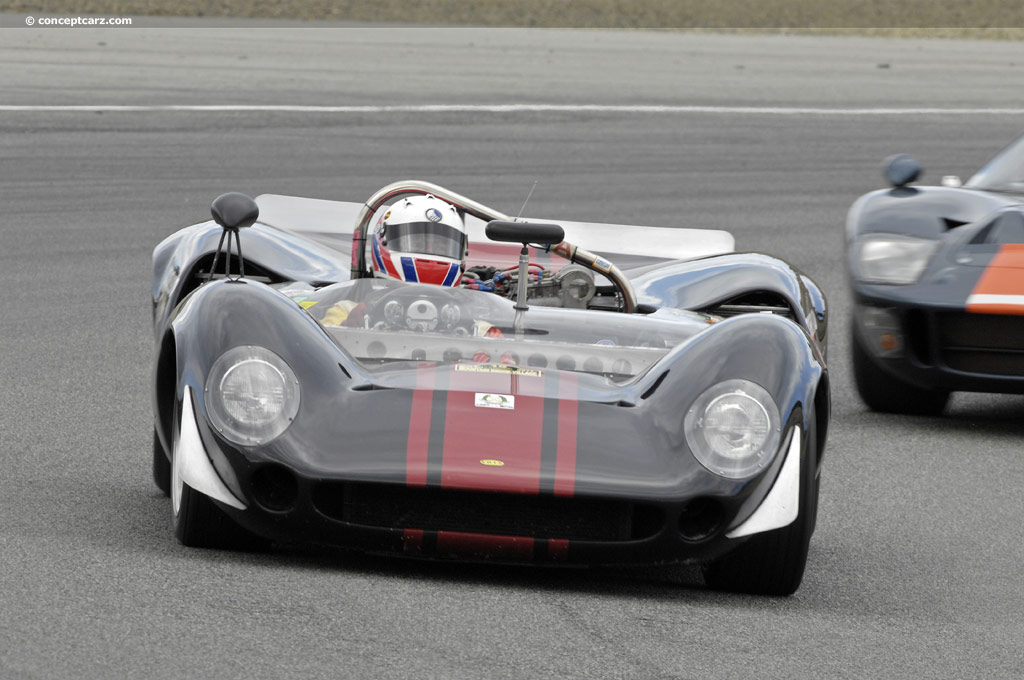
Spyder
Chassis #: SL71/36
View info and history
Auction entries : 1
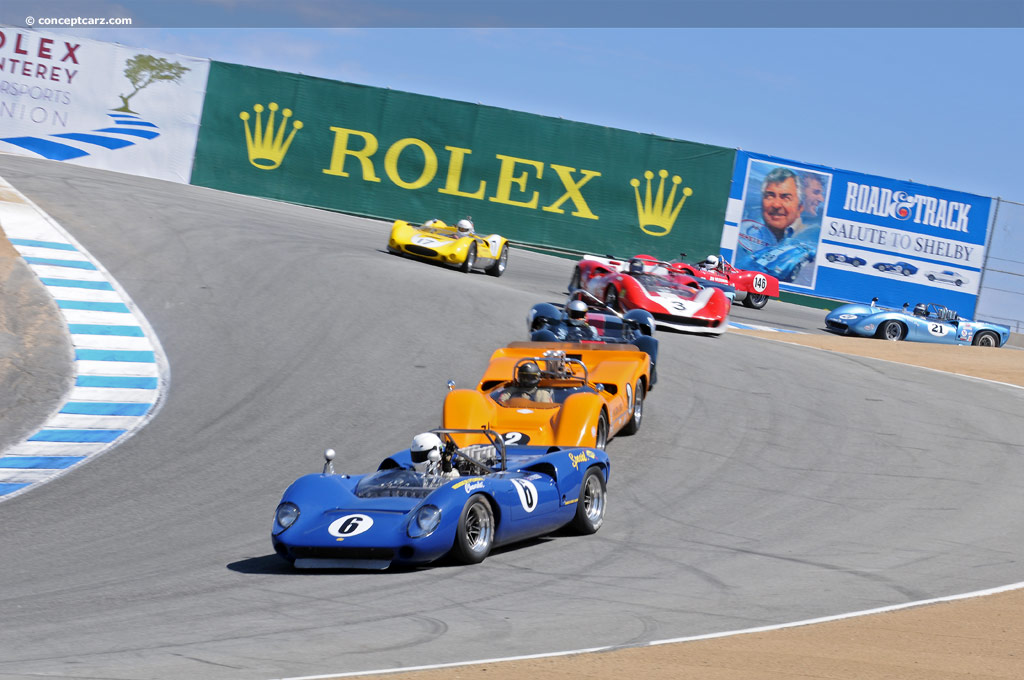
Spyder
Chassis #: SL71/21
View info and history

Spyder
Chassis #: SL71/21
View info and history
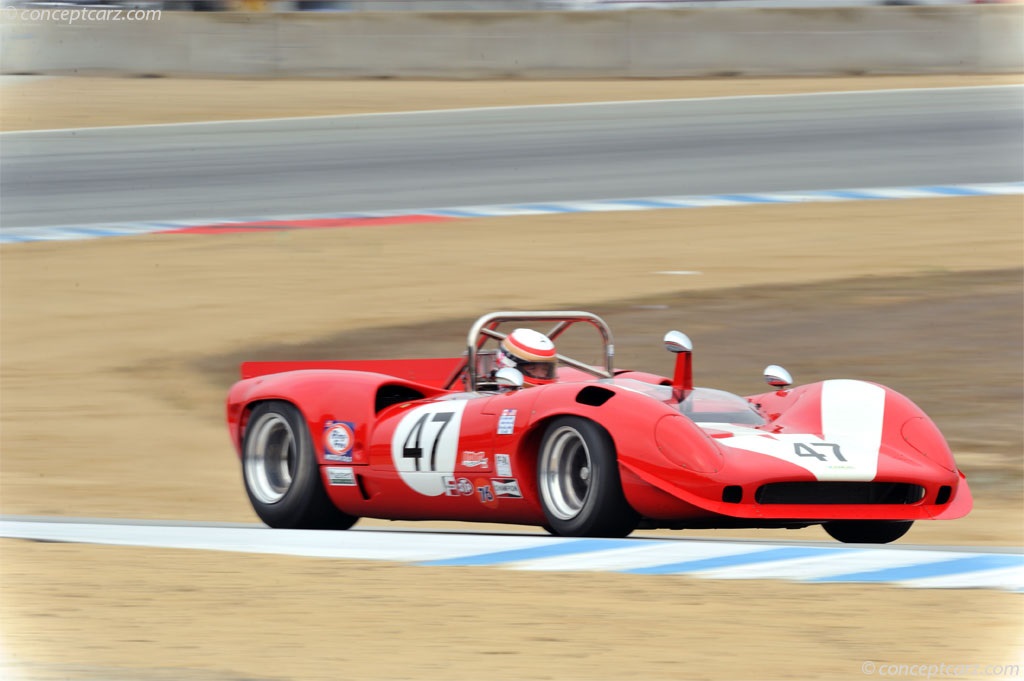
Spyder
Chassis #: SL75/125
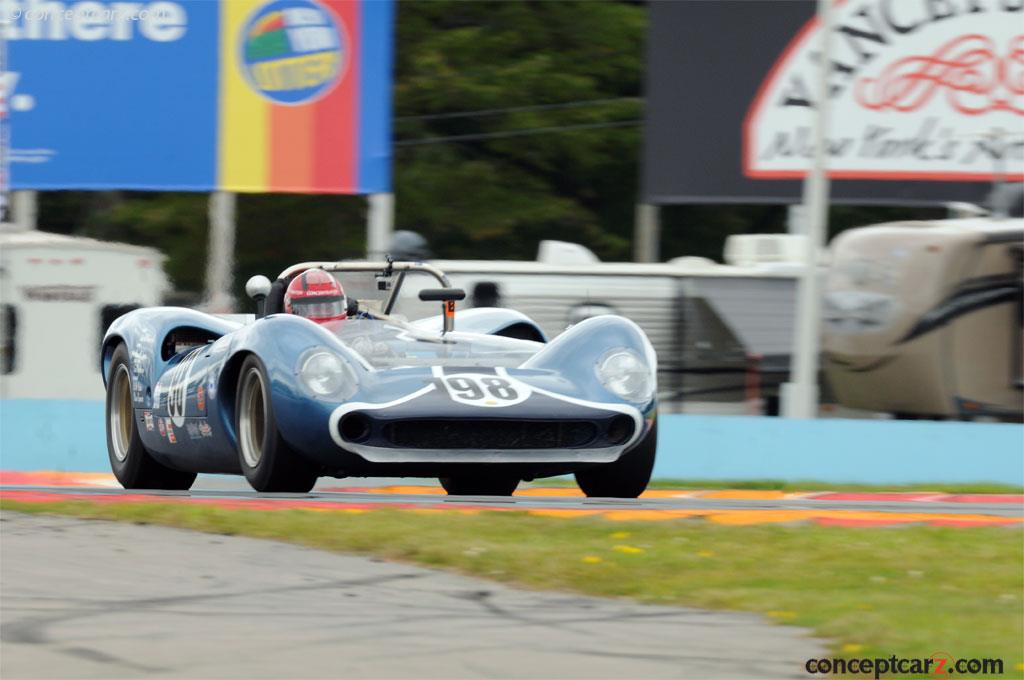
Spyder
Chassis #: SL71-44
View info and history
by Daniel Vaughan | Nov 2023
Related Reading : Lola T70 History
The Lola Racing Cars Group introduced the T70 in 1965 and during its lifetime, from 1965 through 1969, over 100 examples were produced in three versions. They were designed for endurance racing, incorporating excellent aerodynamics and flowing lines. The chassis was an aluminum monocoque structure that was both lightweight and rigid. The project was undertaken by Eric Broadley of Lola Cars with assistance....
Continue Reading >>
Continue Reading >>
- 1966 Lola T70 MKII Menu
- Article
- Image gallery
- Valuation
- Specifications
- Profiles
1966 Lola T70 MKII Vehicle Profiles
Recent Vehicle Additions
Related Automotive News
RRDC Evening With Emerson Fittipaldi A Highlight Of Long Beach Grand Prix
LONG BEACH, Calif. (April 7, 2017) - The April 6 RRDC Evening with Emerson Fittipaldi Presented by Firestone boasted a capacity crowd of auto racing dignitaries, corporate executives and champion race-car drivers, as the two-time Formula 1 and...

Can-Am History Roars Back to Life at Spring Classic May 19-21
The Can-Am Series made its last appearance at Mazda Raceway Laguna Seca at the 1973 Monterey Grand Prix. Vic Elford (10) in the UOP Shadow was chased through the Corkscrew by winner Mark Donohue (6) in the dominant Sunoco Porsche 91730.
MONTEREY,...
RRDC Evening with George Follmer a Highlight of Long Beach Grand Prix
LONG BEACH, Calif. (April 15, 2016) - On April 14, in front of a capacity crowd of auto racing dignitaries, corporate executives and champion race-car drivers, Can-Am, USRRC and Trans-Am champion George Follmer was honored by the Road Racing Drivers...
RRDC VOTES IN 37 NEW MEMBERS FOR 2013
HILLIARD, Ohio (Nov. 7, 2013) - Thirty-seven race-car drivers and motorsports professionals have been voted into the Road Racing Drivers Club in 2013. The group includes 13 Regular Members from the open-wheel and sports-car racing ranks, 20 Associate...

1967 Can-Am Road America: The Beginning of the 'Bruce and Denny Show'
While Formula One will be forever considered the pinnacle of motorsport, from a period between 1966 and 1986 there existed a series that would likely be the closest to anything goes as any motor racing series could truly get. Based upon the FIA Group...
